Ghost Recon Future Soldier Review
Posted by
SpectralShock
on
The Ghost Recon franchise has always been a staple of third person tactical action, from its early days on PC to the latest console offerings. Tom Clancy’s Ubisoft titles have began to take a new direction though, with Rainbow Six games finding more widespread success by becoming more user friendly. As Ghost Recon Future Soldier arrives in stores, this trend continues to carry on. Future Soldier is definitely simpler in some ways than its Advanced Warfighter predecessors; however in the same light it’s also more enjoyable and accessible. It’s a fair trade, and if you’ve always been craving tactical action but found the series too heavy on micromanagement, Future Soldier might just be for you.
Future Soldier starts off in a gruesome fashion, with a Ghost team being wiped out while attempting to secure a weapon on its way to the US. In comes your Ghost squad, tasked with untangling the web of global terrorism in an attempt to find where the bomb was coming from and who the masterminds behind the whole operation are.
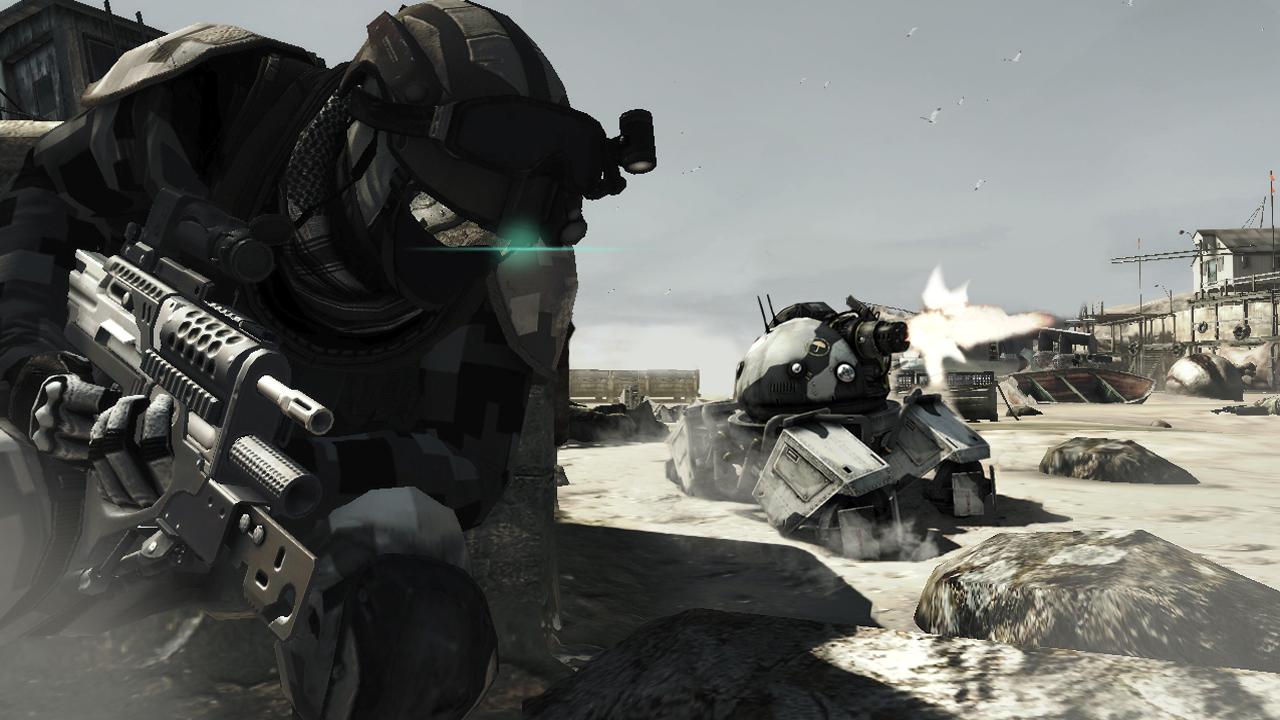
The campaign is a lengthy one, which is nice to see, taking players on a global journey through a variety of very distinct and good looking destinations. There are some good set pieces that take place, as the game sometimes breaks from its humble foundations to pretend that it is Call of Duty for just a little while. Perhaps the biggest problem with the plot is the endgame, which resembles that of HAWX 2 far too much, making you wonder if Tom Clancy is running out of ideas. The campaign missions play out mostly in the same fashion, though some on-rails shooting, a frustrating final chapter, and a very enjoyable solo op break up the pace.
Your squad consists of three other soldiers, though you’d be hard pressed to recall anything about them beyond their voices. There aren’t any personalities to speak of or character development, though this isn’t a problem in a series like this. Unlike the previous games, Future Soldier is decidedly linear with no optional objections, and limited approach angles to your target, making things feel a bit streamlined. Also, the game’s length turns out to be a double edged sword, as some of the action elements and scenarios begin to repeat themselves, which is a bit disappointing.
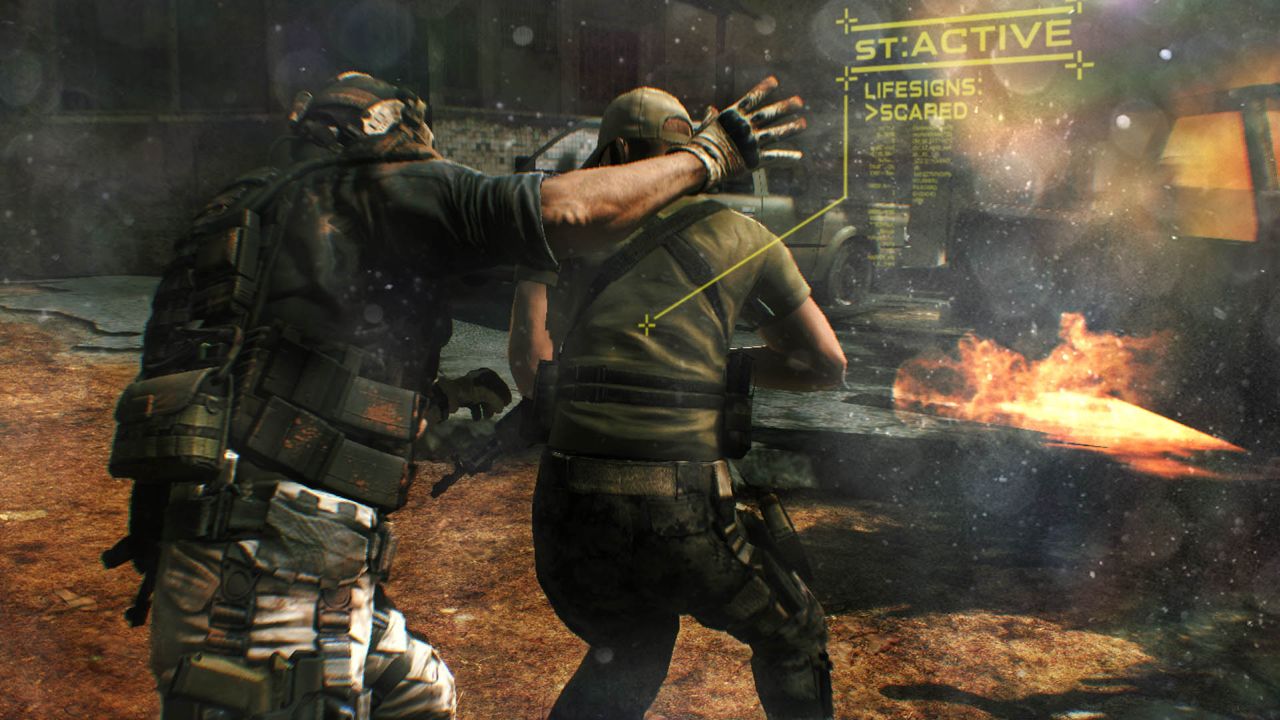
Like all the Ghost Recons, Future Soldier is a third person shooter with a focus on stealth. Since it is the near future, you’ve given access to a variety of gadgets and tools to help you in battle. The most used tools are the cloak camouflage, which basically lets you be invisible to enemies as long as you’re crouched and aren’t directly in their line of sight for too long. You also get an air drone, which you can fly around and spot/mark enemies in the area. Lastly, there’s the anti-personnel sensor that can be thrown anywhere (enemies are apparently oblivious to it) that helpfully points out every bad guy in range, as well as x-ray vision that reveals bad guys in your area.
These are some high tech tools, but as you might have guessed, they make the game fairly easy. With an ability to spot your enemies through walls once they are marked with the drone, sensor, or your x-ray vision, while you and your team remain invisible moving cover to cover, there’s rarely a time that the game poses any kind of significant challenge. The game’s primary (and only) squad mechanic is the sync shot, which allows you to mark up to four targets and take them out simultaneously. It’s satisfying enough, but that’s pretty much all you’ll end up doing to maintain stealth and progress. There’s some patience involved to ensure patrolling enemies don’t spot their dead comrades, but that’s about it.
Even if you break stealth, or go through the game’s scripted gun battles, things don’t get any more challenging when the bullets start flying. To the game’s credit, sitting in cover is your best option as you’ll get gunned down quickly out in the open. Beyond that, just take shots at enemies who helpfully cover behind destructible wooden crates, run across open space, or peak their head above safety. Your squad is satisfyingly accurate as well, so there really aren’t any gunfights in the campaign that will test your skills – except those against other enemies late in the game that also have stealth camo.
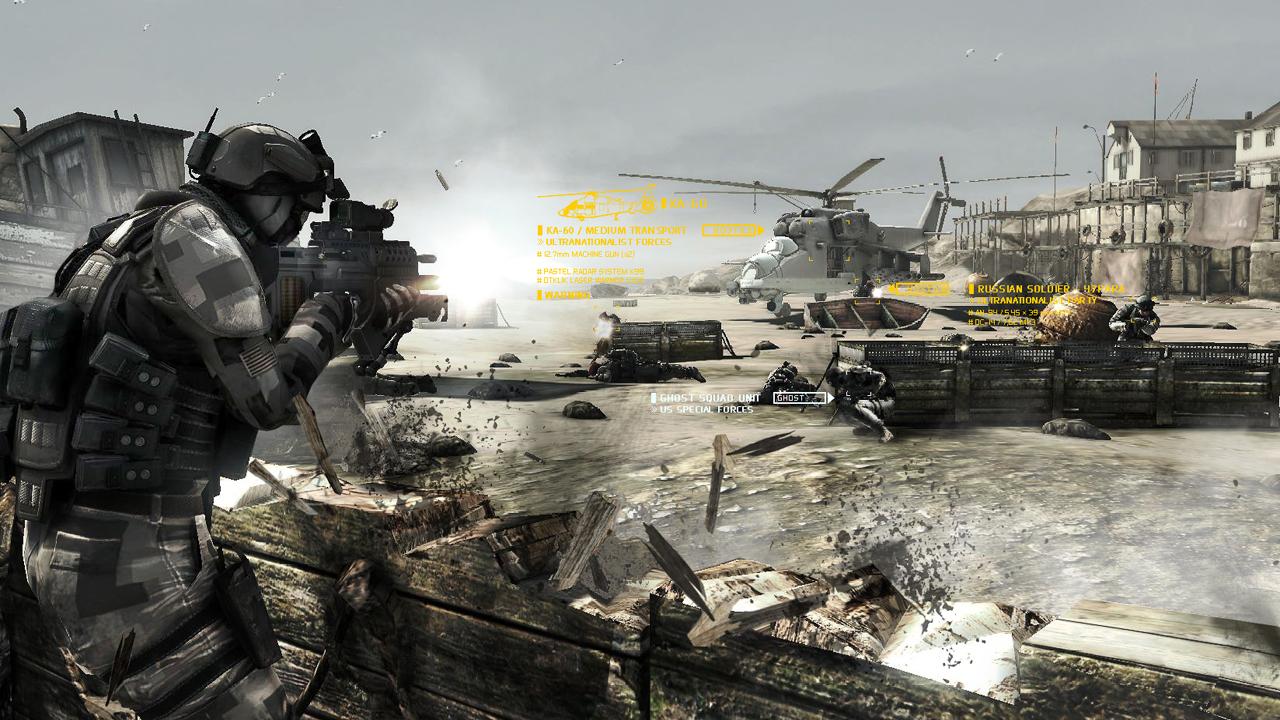
Both enemy and friendly AI is rather simple. Enemies usually stand around or patrol the area, waiting for something to happen. In an odd design decision, if an enemy AI spots a dead body (sometimes at impossible angles), they instantly go on alert and open fire on your position (though they never saw you), and your team encourages this by also engaging. Something a little more complex, like letting the AI investigate the area around a dead body instead of just going in guns blazing, would have been nice.
Your teammates actually cheat, and can complete their sync shots through concrete walls and other obstructions, while you’re often required to actually have line of sight with the target. They can also travel directly by the enemy without triggering any suspicion, while the same trick would get you spotted. As hinted at earlier, the game has been significantly streamlined to eliminate all squad management. You no longer have to worry about giving orders, instead teammates simply follow you around and wait for sync shot opportunities, nor do you select their gear. It takes a lot of squad management out of the game, though perhaps for today’s audience, it’s the right way for the series to go. So having said all this, Future Soldier isn’t really a tactical shooter unless you’re dedicated to earning the highest score for every mission, as most kills come easy and stealth maintained without breaking a sweat.
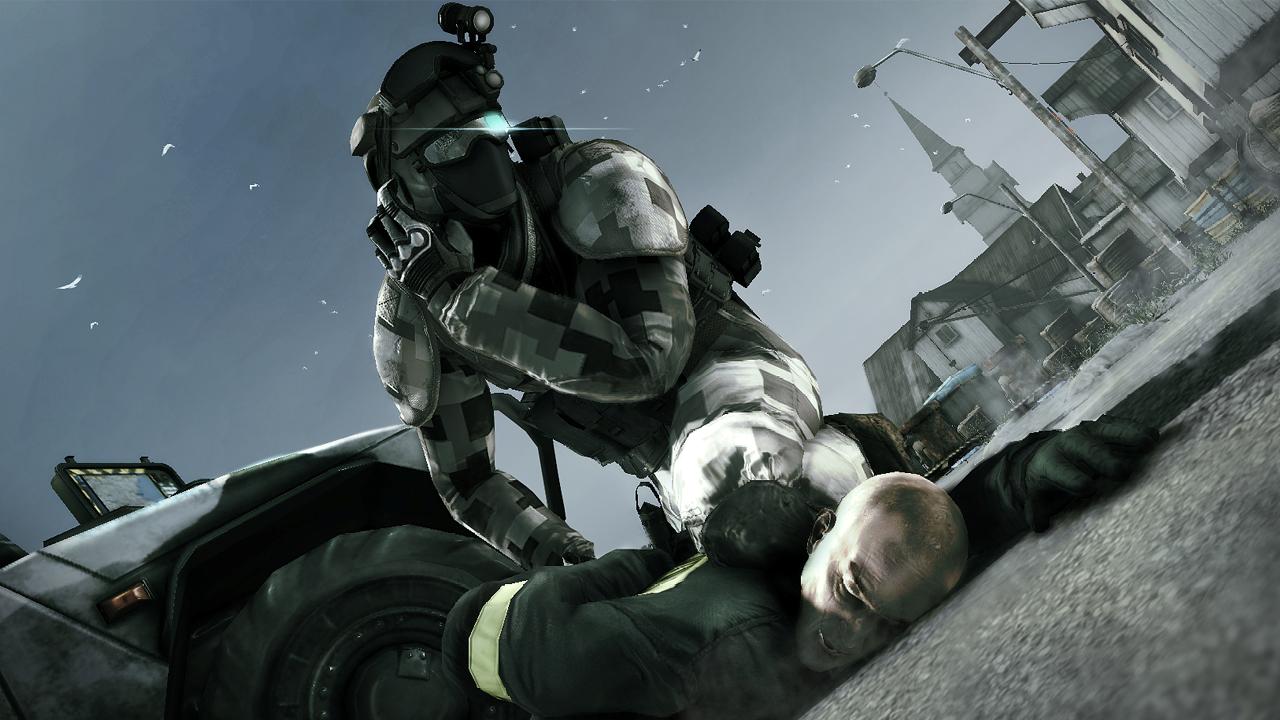
You can, however, customize your own weaponry, and that’s where a feature called Gunsmith comes in. It supports Kinect integration, as you can use your arms to scroll through a set of weapons within a specific category. Each gun has a set of stats, from power to accuracy, and you have the freedom to customize everything. Yes, literally everything. At a touch of a button (or arm gesture), the rifle is dissected into almost every realistic component of a gun imaginable. From here you can scroll through and choose what parts you want to replace, with the game giving you immediate feedback on how the new component will affect the overall performance of the weapon.
It’s a fantastic system – but it comes underutilized. All of the missions you start in the single player campaign already have the “optimal” weapon selected for you, so there’s never any good reason to tinker around. The only thing that really matters is having a gun with a silencer, beyond that the results of your tweaking has minimal impact on the gameplay. Especially because most of the parts are locked until you’ve completed a particular challenge or the mission itself. It gives the game replayabilitiy to test out your new guns, but there’s not much to it on your first go. Where guns really start to matter – and a lot of the game’s issues are alleviated – is during online play.
Most of the issues you’ve read so far become non-existent when you’re taking on the game in a four player coop mode. Now, everyone is a target for the enemy AI, there are no more cheap shots to be had from CPU-controlled teammates, and tactical timing actually becomes a skill. It’s definitely the best way to play the campaign, given that you want to practice team work with your buddies. And if not – that’s OK too. The game features a Guerrilla mode, which is a horde scenario with 50 waves of different enemies to survive through on 4 maps. Two players can take part either split screen or online, and the ability to jump in/out mid match is appreciated (something that’s not possible in story mode coop). The action itself is standard stuff, though players can earn perks to help them in battle, from unlocking radar to calling in an airstrike.
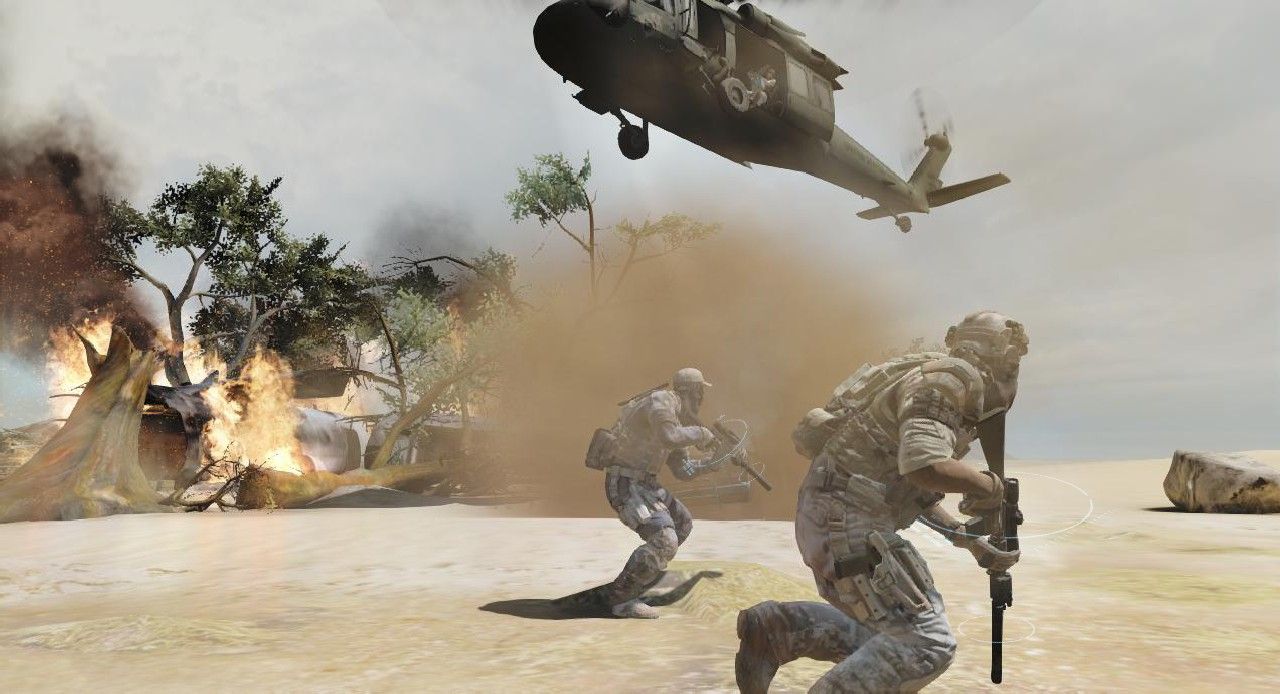
Competitive multiplayer, called Adversarial mode, is a strong offering from Future Soldier. Factions of Ghosts and Bodark go at it on 10 different maps that are well designed without any notable choke points. Up to 12 players can compete using Rifleman, Scout, and Engineer classes. An interesting approach sees players rank up and earn experience for these classes separately, rather than having one global unlock scale. You’re also stuck using the same class for the entire match, so the system is fairly restrictive when it comes to your multiplayer progression.
At each new level gained, you also earn an attachment point. These are used to purchase new parts for your arsenal inside Gunsmith, which runs independently of your single-player unlocks and is much more relevant online. Customizing weapons to fit your play style becomes rather crucial to survival. New selections of weapons and equipment also become available at certain progression ranks. As such, the competitive rank is functional, but it’s nowhere near as flexible nor feels as quick as something like Battlefield 3.
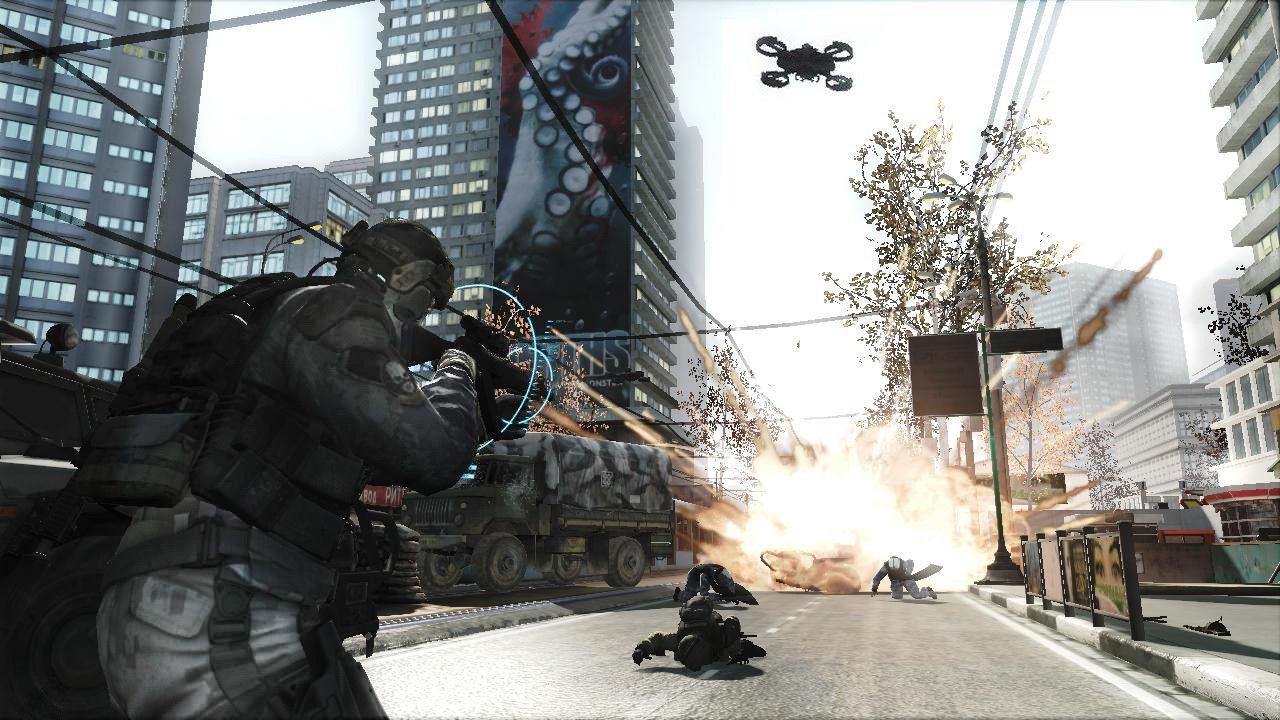
As for online game modes, they are all objective-based so you won’t find any deathmatches here. Conflict sees objectives randomly located around the map, with teams racing to complete them. Decoy is an interesting twist that presents three objectives, but two of them are fake and nobody knows which one is real until it is attempted. Saboteur sees teams attempt to secure a centrally placed bomb and take it to their opponent’s base. And finally, series favourite Siege has you complete objectives or eliminate the enemy team within a time limit – without respawn opportunities.
All of the modes work well, given that your teammates try to play a tactical game. You are actually assigned to one of two squads on the same team, and there are benefits for playing together. For example, when attempting to work on objectives, nearby teammates speed up the process. There is also a suppression mechanic (also exists in single player), allowing you to put fire on your enemies while teammates flank. Squads that use the game’s coordination system (highlights important game world elements), suppression, and taking on objectives together are most likely to succeed. These mechanics are well implemented and present robust teamwork mechanics for the action online.
If there is an area where the game noticeably struggles, it would be the technical aspect. For an Ubisoft game with a multi-studio development, this is rather surprising, but the game has some bad bugs. Enemies appear in the ground, unable to be killed and therefore requiring a checkpoint restart; you get no crosshairs at a set piece, thus being unable to complete it; enemies and teammates shooting through solid walls; and more. It’s a bit jarring that such issues exist, and though they aren’t exactly game-stopping issues, it can be annoying to have to restart the checkpoints. These issues may be addressed with a day-one patch that is said to be planned for release.
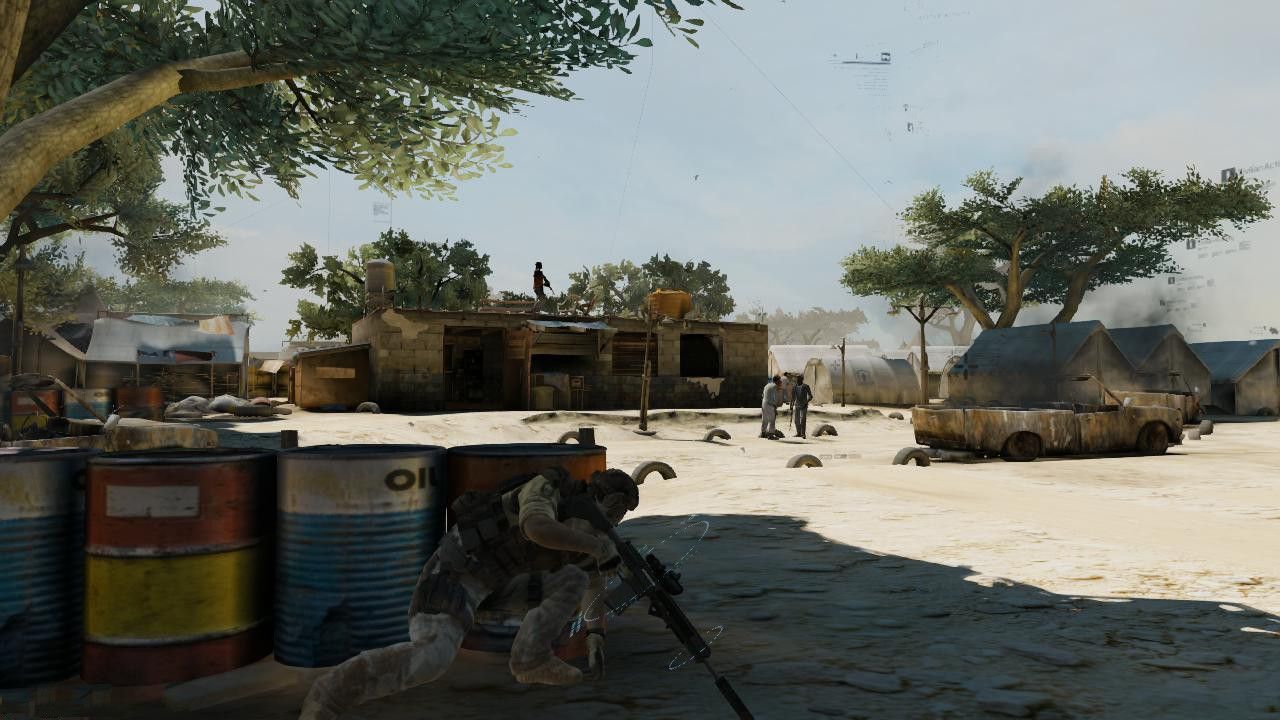
Also, for some odd reason, the Gunsmith interface is noticeably lower resolution compared to the rest of the game, making some elements difficult to see. Other then that though, nothing about the game’s presentation particularly stands out. The audio work is serviceable, with teammates being rather helpful in calling out any enemies they spot. Visuals are nice, particularly with some of the locations you will get to visit in single player. Also well designed are the gun models, though the same can’t be said for the oddly looking human faces.
Ghost Recon Future Soldier is a sign of the times. Gone are the days when you’d need to micromanage your squad through a series of urban locations – replaced instead with a more fast paced, sleek approach of taking out the bad guys all across the globe. Some die hard fans may scoff at that, but given that neither Advanced Warfighter games were particularly good due to their numerous issues, this is perhaps the right step for the series. A wealth of offline and cooperative content is supplemented by mostly well designed online play, making Future Soldier a solid entry in the franchise. It’s not as complex or difficult as it once was, but it’s certainly a little more enjoyable because of it.
